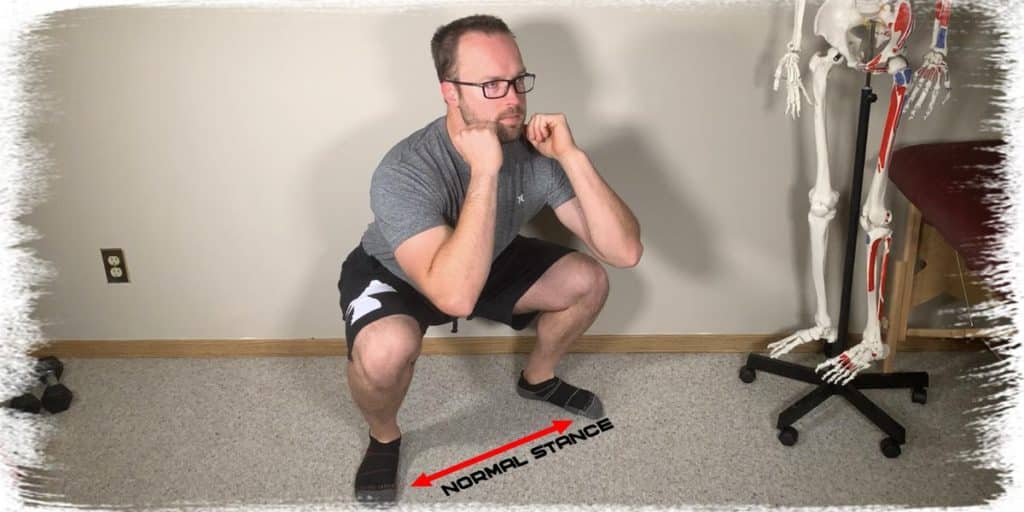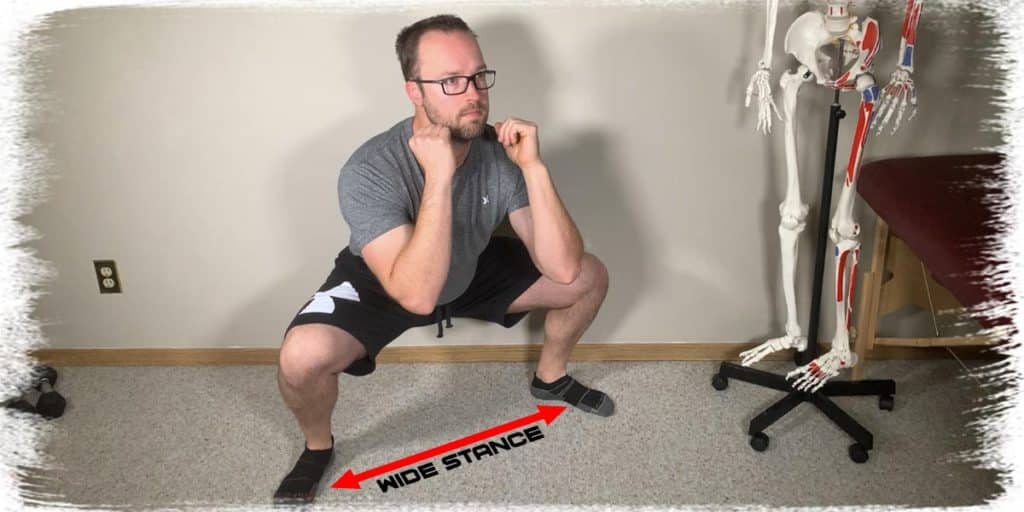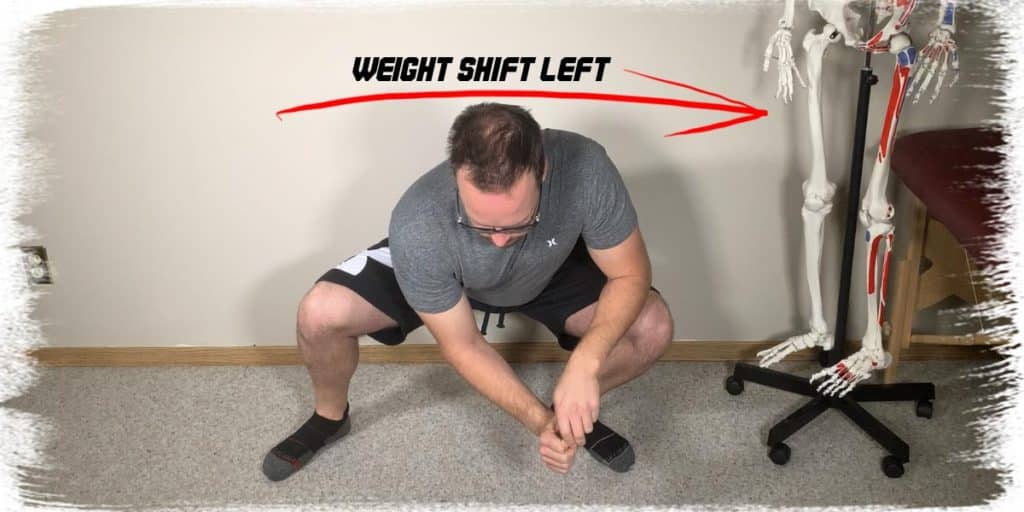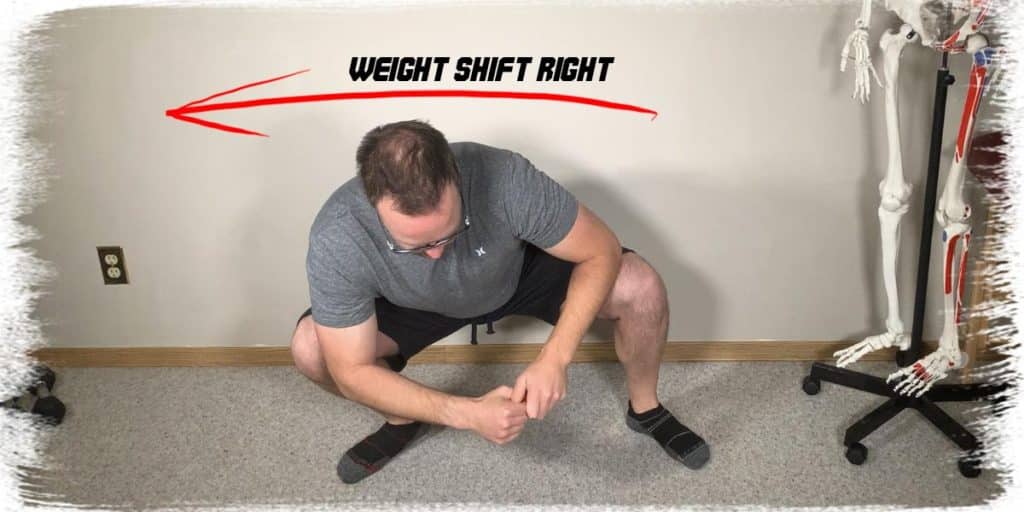Whether you’re squatting in a workout or simply squatting to pick something up off the floor, plenty of women (and men) wonder if this movement is inherently bad for their pelvic floor muscles. By the time you’re done reading this article, you’ll have your answer along with a solid understanding of the relationship between squatting movements and the pelvic floor muscles.
Generally speaking, squatting is not bad for your pelvic floor. However, you need to ensure engagement of your core and pelvic floor muscles when squatting while also ensuring that the type of squat you perform (and your squat stance) is optimal for these muscles.
To get all the tips and insight on how to ensure you’re taking good care of your pelvic floor muscles when squatting, keep on reading!
ARTICLE OVERVIEW (Quick Links)
Click/tap on any of these headlines to jump to that section of the article!
• Meet the expert
• What happens during a squat
• Tips for squatting in general
• Tips when squatting for exercise
• Your checklist when squatting
Keep in mind that this article is written primarily for those with otherwise healthy pelvic floor muscles or for those with more mild pelvic floor symptoms, such as experiencing urinary stress incontinence with squatting. Regardless, if you’re experiencing pelvic floor dysfunction, you’re advised to seek appropriate consultation, hence the disclaimer below…
Related article: Here’s How Often to do Pelvic Floor Exercises (A Specialist Explains)
Disclaimer: While Kelsey and I are physical therapists, we are not YOUR physical therapists. As a result, we cannot tell you whether or not any treatments mentioned on this website or in this article may or may not be appropriate for you, including squatting. By following any information within this post, you are doing so at your own risk. You are advised to seek appropriate medical advice for any pain you may be experiencing.
Meet the expert
The expertise within this article comes to you from my wonderful colleague and amazingly passionate pelvic floor physical therapist, Kelsey Drew (MScPT). I don’t know what Kelsey has more of: knowledge of pelvic floor health and rehabilitation or passion for what she does.
I sat down with her on this topic and picked her brain to ensure that the tips within this article came from a reputable individual. Be sure to follow her on Instagram at kelseydrew.pt
What happens during a squat
Regardless of whether you’re squatting for the need of completing a daily activity (such as picking something up off the floor) or squatting for workouts, there are some universal demands that the pelvic floor goes through. These are worth going over quickly as they will help you conceptualize how the pelvic floor muscles respond and adapt to this movement.
The width of your squat stance
The ideal width of your stance can really depend on several factors, and while I won’t be going over how to determine how to pick the ideal stance for your needs, here’s what you need to know:
- The wider your stance is, the more stretch you will provide to the pelvic floor muscles as you move down into your squat. This can be quite favorable if you have generally tense or tight pelvic floor muscles that need to undergo some gentle lengthening.
- The width of your stance can also determine the depth of your squatting ability. Again, a stance that allows you to go deeper will provide an increased stretch to the pelvic floor musculature.
On the way down
As you descend into a squat, the pelvic floor muscles must begin to relax and gently lengthen to accommodate the movement happening in and around the pelvis (hips). If the pelvic floor muscles remain tight or tense, it can limit your ability to descend in the squat and may produce some generalized discomfort in the region as a result.
At the bottom of your squat
When you’re at the bottom of your squat, this will be the point of maximal lengthening of the pelvic floor muscles. The lower your squat, the greater the lengthening they’ll undergo.
The more lengthened out a muscle becomes (such as the pelvic floor muscles in this case), the less ability we generally have to control them and engage them. This is due to a phenomenon that occurs with all skeletal muscles in the body, which is known as a muscle’s length-tension relationship.
Pro tip: When appropriate for her patients, Kelsey often has them squat as deep as tolerable using a wide stance and then hold this position for specific durations of time to stretch and relax the pelvic floor.
On the way back up
When coming out of the bottom range of your squat, the pelvic floor muscles should begin to contract (think of doing a Kegel). This helps to ensure that the pressure within your abdomen (your “core canister”) isn’t pushing down onto the otherwise disengaged muscles, as this can strain the pelvic floor and create dysfunction of the muscles.
Tips for squatting in general
Squatting is a fundamental movement of daily life and activity. Regardless of why it’s being performed, how often it’s performed or to what depth, it requires the pelvic floor musculature to respond and adapt in specific ways. Keep the following tips in mind when going about squatting movements for your daily activities:
How deep you should squat
The depth of your squat is dependent upon multiple factors. When looking solely at the pelvic floor musculature, keep in mind that a squat should always be comfortable for your pelvic floor region (along with the rest of your body).
Should you hold your breath?
If you’re performing a squatting movement without lifting anything heavy, there’s really no need to hold your breath. The same also holds true if you are lifting something more on the heavy side, such as a box of books.
The idea behind holding your breath (known as the Valsalva maneuver) can help increase the rigidity of the core and midsection, but this rigidity is typically suited for heavy loads and those who know how to use the maneuver properly (it can be risky if you don’t know what you’re doing).
It can produce higher amounts of pressure on the pelvic floor muscles (the bottom of your “core canister”), which in this case can be viewed as unnecessary for a movement such as squatting to pick a pencil up off the floor.
Tips when squatting for exercise
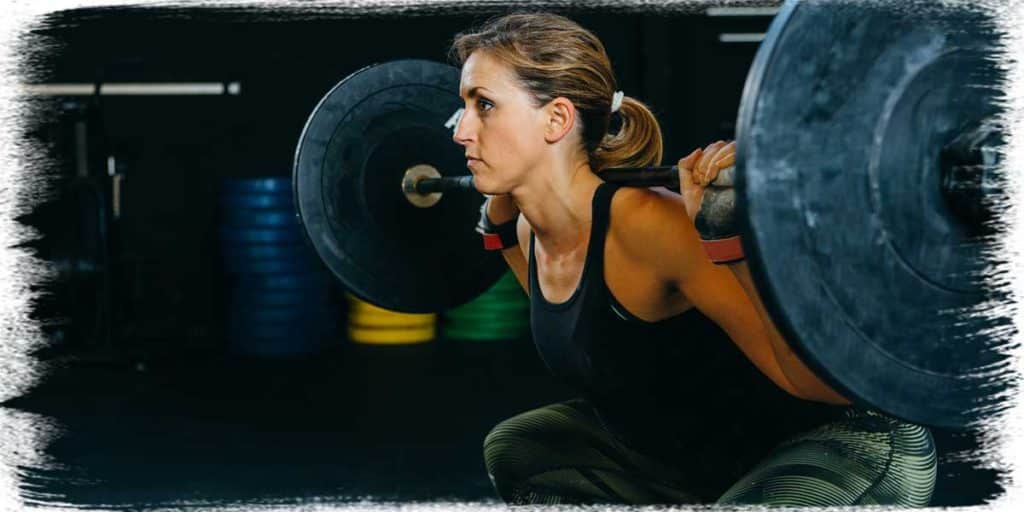
Modifying your stance
When solely considering the pelvic floor for determining your squat stance, your best bet is to find a stance-width that feels comfortable for your pelvic floor musculature, especially when at the bottom of your squat. Keep in mind that a narrow stance will stretch the pelvic floor region slightly less at the bottom of the movement than a wider stance.
You’ll have to balance this with the performance-based aspects or goals that you’re hoping to achieve with your squats, so it may take some time to find a happy medium if this is the case.
Holding at the bottom of the squat
Again, when solely examining the appropriateness of holding at the bottom range of your squat from a pelvic floor perspective, a prolonged hold likely won’t be an issue if you have normal function of these muscles. It can even be beneficial (since it allows more time for them to stretch) if your pelvic floor is a bit tight.
However, if you have stress-induced incontinence due to under-active pelvic floor muscles, holding the bottom of your squat might cause more trouble than help, at least until you can perform appropriate pelvic floor contraction (i.e. a Kegel) while holding this position.
Pro tip: When treating weak or underactive pelvic floor muscles, Kelsey will often progress squats and squat-based movements as her patients improve their ability to hold a pelvic floor contraction throughout an exercise or movement. Start with performing Kegels while laying on your back. Once you begin to master them in this position, you can perform them with squats and other movements.
The speed of your squat
If you’re prone to pelvic floor dysfunction, such as stress-induced incontinence, it’s a good idea to perform your squats in a slow and controlled manner.
Squatting slowly will help give you time to perform a volitional pelvic floor contraction during the movement without compensating through other muscles. This slow movement (which helps ensure proper contraction) can help to strengthen your pelvic floor and eliminate dysfunction.
It’s hard for our brain to “feel” or “interpret” movement when it’s performed quickly, especially if it’s a movement that we’re trying to learn for the first time (such as holding a pelvic floor contraction while ascending from the bottom of a squat). So, going slow will afford your brain more time to feel and interpret whether or not you’re getting effective or appropriate contraction or relaxation from your pelvic floor.
How heavy to go
When considering only the pelvic floor, your squats should only be as heavy as your ability to hold proper core bracing and pelvic floor contraction throughout each phase of the movement.
If you lose your ability to maintain control of either your core or pelvic floor musculature throughout the movement (due to too heavy of a load), it can lead to dysfunction throughout the pelvic floor (in addition to potential injury anywhere else in the body).
Should you hold your breath?
While performing the Valsalva maneuver is relatively common when squatting against higher resistance loads and is safe for those with an otherwise healthy pelvic floor, Kelsey recommends avoiding doing so if you have urinary stress incontinence (you pee a bit when you exert yourself against the resistance of the squat).
But, if you’re squatting near-maximal or maximal loads and don’t experience any adverse pelvic floor symptoms (such as pain or stress-induced incontinence), the Valsalva is fine to perform, provided you know how to do so safely and effectively.
Your checklist when squatting
If you’re not overly familiar or confident with squatting, there can be a lot of information to process the movement, especially if you want to look after your pelvic floor.
You can use the checklist below to help ensure that you’re covering all of the tips within this article each time you squat:
- Engage your core muscles with all types of squats
- Modify your stance-width based on what feels best for your pelvic floor
- Remember: the deeper you squat (and the wider your stance), the more you’ll stretch the pelvic floor muscles as you lower into the movement.
- Keep your core engaged throughout the entire squat.
- Only hold your breath when squatting if (must meet all criteria):
- You have NO stress incontinence.
- You are lifting a near-maximal load.
- You know how to do the Valsalva maneuver appropriately.
- Inhale on the way down.
- Exhale on the way up while simultaneously performing a kegel (if needed) to ensure that the pelvic floor muscles are contracting appropriately.
- For workouts: only load your squats up to the point where you can control your form and pelvic floor activation.
Final thoughts
For those with healthy pelvic floor function, squatting is not detrimental to the pelvic floor region. Squatting, when done properly, can help to relax or strengthen muscles of (and surrounding) the pelvic floor. The key is to know how to perform all aspects of the squat correctly, based on the needs of the muscles themselves.
If you’re experiencing pelvic floor dysfunction of any kind, make sure to get an evaluation from a qualified pelvic floor specialist, as they will be able to help fine-tune all aspects of your squats and movements to make sure your pelvic floor becomes (and stays) as healthy as possible.

Hi! I’m Jim Wittstrom, PT, DPT, CSCS, Pn1.
I am a physical therapist who is passionate about all things pertaining to strength & conditioning, human movement, injury prevention and rehabilitation. I created StrengthResurgence.com in order to help others become stronger and healthier. I also love helping aspiring students and therapists fulfill their dreams of becoming successful in school and within their clinical PT practice. Thanks for checking out my site!


